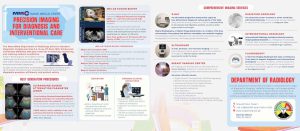Determining whether a child may have an eye problem can be a bit challenging. Unlike adults, children may not necessarily know what the normal visual baseline is, and hence are less likely to complain. Most teens and some older children may be able to express their specific concerns, but for most children, visual problems are often left untreated or managed too lately.
It is essential therefore to pay attention to little clues for these potential problems. If perhaps you ever notice your child squinting often, rubbing their eyes, tearing excessively, sitting too close to a TV, complaining of headaches or having difficulty reading, then you might want to take your child to an Ophthalmologist, a doctor who provides comprehensive eye care services – diagnosis and management.
Eduardo V. Sarabia, MD, Chairperson of Makati Medical Center’s Department of Ophthalmology, answers questions regarding poor eyesight in kids, and what parents can do to address this important health issue.
What are common eyesight problems among kids?
Near-sightedness (myopia), far-sightedness (hyperopia), and astigmatism (the imperfect curvature of the cornea) are types of refractive errors that cause images to be blurred. This can be managed with simple eyeglasses, which greatly improve the quality of vision.
Strabismus is a condition wherein one or both eyes turn in or out. This misalignment of the eyes manifests as either crossed eyes or walled eyes, often resulting in doubling of vision. If detected early, this can be managed with eyeglasses, sometimes using special prismatic lenses to make the eyes align normally. Surgery can also be offered to mechanically reposition the eyes, but is usually reserved in more advanced cases.
Amblyopia refers to the failure of the eye to achieve normal visual acuity even despite the best attempts to correct it. This is commonly known as “Lazy Eye”, because the brain only receives visual input from one good eye and no contribution from the amblyopic eye. This visual development disorder begins during infancy or early childhood and progresses often due to a failure in correcting another eye problem, such as strabismus, high grade difference between the two eyes, or congenital cataracts.
At what age can a child have poor eyesight?
Poor eyesight can start at any age. They can be as young as newborns and babies, especially if they come from a family with a history of eye problems. Routine eye health screenings are part of an infant’s checkup, as well as checkups among children aged 3 years old and up.
How is poor eyesight diagnosed?
An Ophthalmologist will conduct a variety of examinations to assess eyesight. These include but are not limited to visual acuity testing (using age-appropriate eye charts to check if a child can see at various distances), refractive assessment (to see if vision can be corrected with eye glasses), pupillary light reflex testing (to gauge if their pupils are responding properly) and fundus examination (which may include dilation of the eye to examine the retina and optic nerve).
What is the treatment for poor eyesight?
It is important to note that not all blurring of vision can be managed with just eyeglasses. Specific treatment depends on the specific condition and can include a combination of different corrective techniques. These can include anything from eyeglasses, eye exercises, contact lenses, eye patching, medical therapy, lasers surgery and a host of surgical options. Your ophthalmologist can recommend the best course of treatment for your child’s eyesight, so it is imperative to regularly check-up with your Ophthalmologist to ensure the best for your child’s bright future.
What if my child does not want to wear glasses?
“Make wearing glasses a pleasant and fun experience for your child by letting him or her choose a frame that is cute and comfortable to wear,” advises Dr. Sarabia. “More importantly, assure them that they look wonderful with glasses and this helpful tool can help them in school, during playtime, and sports.”
For more information, please contact MakatiMed On-Call at +632.8888 999, email [email protected], or visit www.makatimed.net.ph.











